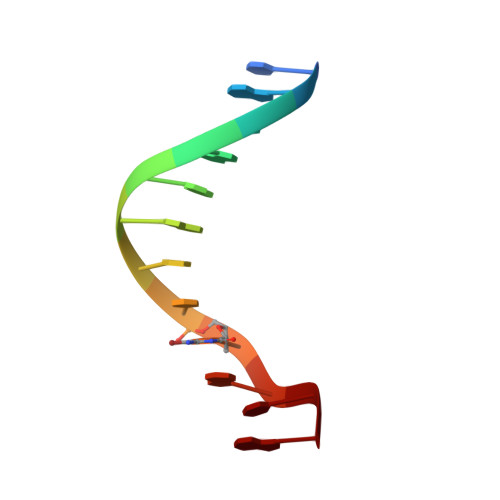Reversible bending and helix geometry in a B-DNA dodecamer: CGCGAATTBrCGCG.
Fratini, A.V., Kopka, M.L., Drew, H.R., Dickerson, R.E.(1982) J Biol Chem 257: 14686-14707
- PubMed: 7174662
- Primary Citation of Related Structures:
3BNA, 4BNA - PubMed Abstract:
A double-helical B-DNA dodecamer has been analyzed by single crystal x-ray diffraction methods and refined independently in four variants: sequence CGCGAATTCGCG at 20 degrees C and at 16 K, and CGCGAATTBrCGCG in 60% methylpentanediol at 20 and at 7 degrees C. The first three forms show a 14-19 degrees bend in overall helix axis, but the fourth is straight and unbent. Detailed comparisons of the various forms have led to a better understanding of helix geometry and bending. Structural principles can be understood best if organized under four headings: 1) intrinsic geometry of the sugar rings, 2) stacking and relative motion of base pairs, 3) geometry of the connecting phosphate backbone, and 4) mechanics of bending in B-DNA. The observed bending is neither completely localized nor smooth and continuous, but an intermediate compromise that can be termed "annealed kinking."














